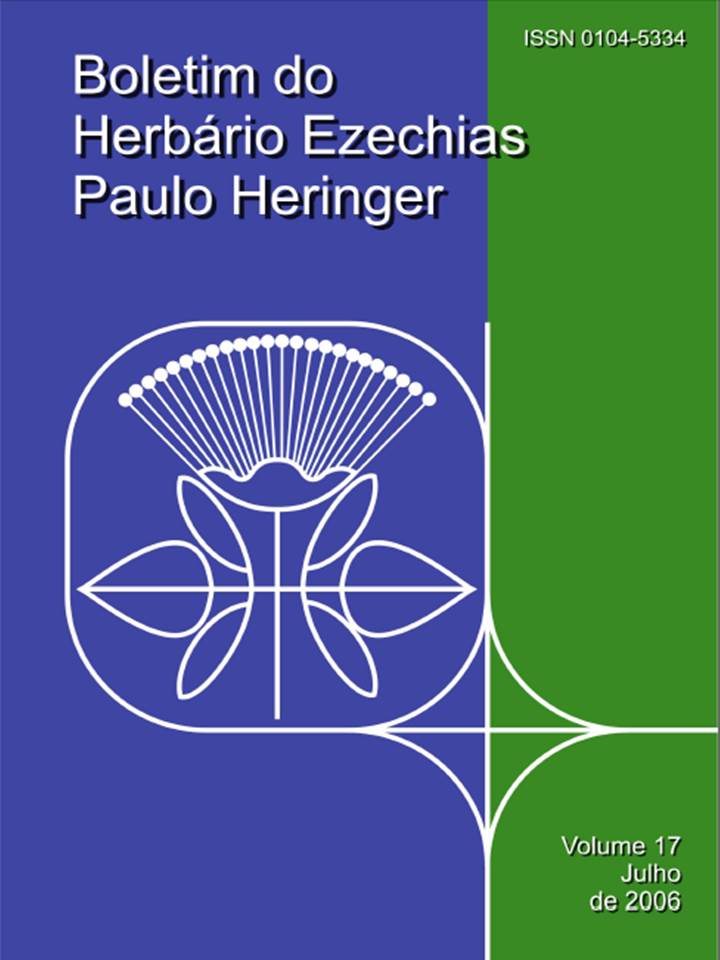IMPORTÂNCIA DAS MICORRIZAS NO ESTABELECIMENTO DE ESPÉCIES ARBÓREAS EM SOLOS DA REGIÃO DO CERRADO.
Resumo
Levantamentos florísticos associados s características dos solos têm sugerido a existência de espécies preferenciais nas diferentes comunidades do Cerrado. Algumas espécies vegetais apresentam preferência por solos com fertilidades definidas. Assim, existem as espécies que preferem solos com fertilidades mais elevadas, ocorrendo, preferencialmente, em solos eutróficos. Da mesma forma, existem aquelas que ocorrem com maior freqí¼ência em solos distróficos e também as que parecem não ter preferências quanto fertilidade. Por outro lado, tem sido demonstrado que algumas espécies que ocorrem em solos distróficos respondem com maiores produções quando são cultivadas em solos com maior disponibilidade de nutrientes. A associação micorrizica torna-se de grande importância para espécies vegetais em ambientes com pouca disponibilidade de recursos. A hipótese de que a melhoria na absorção de nutrientes e água podem conferir s plantas micorrizadas maior adaptação e produtividade foi testada no presente trabalho. O experimento foi montado em casa de vegetação na Estação Experimental de Biologia da Universidade de Brasília. Iniciou-se o plantio em dezembro de 2000 e finalizou-se em fevereiro de 2001. Para cada uma das seis espécies arbóreas foi montado um experimento inteiramente casualizado em oito repetições em três solos em dois tratamentos: fumigado com brometo de metila e natural. A ausência da microbiota do solo prejudicou, exceto para Eugenia dysenterica, o crescimento inicial das espécies. As espécies apresentaram melhor crescimento no solo mesotrófico. Todas as espécies foram colonizadas por fungos micorrizicos. A maior colonização ocorreu em Sclerolobium paniculatum espécie de solos distróficos.
Palavras chave: Biologia do solo, Fertilidade, Cerrado, Mudas.
HE IMPORTANCE OF MYCORRHIZAS IN THE ESTABLISHMENT OF ARBOREAL VEGETABLE SPECIES IN SOILS OF CERRADO REGION
ABSTRACT - Floristic surveys associated with the characteristics of the soils can define patterns regarding the establishment of the plant species in the Cerrado. Some species present preferences for soils with defined fertilities. Thus, there are those species that prefer soils with higher fertilities, eutrophic soils or occurrences with higher frequency in dystrophic soils and others that are indifferent to fertility. On the other hand, some species that occur on dystrophic soils produce more when cultivated in more fertile soils. The mycorrhizal associations become of great importance for plant ecies growing in environments with little availability of resources. The hypothesis tested in this work was that the improvement in the absorption of nutrients and water gives the mycorrhizal plants greater adaptation and productivity. The experiment was conducted in a greenhouse from 2000 to 2001. For each of the six studied species a randomized experiment with eight repetitions in three soils in two treatments was undertaken. The absence of biota in the soils reduced the initial growth of all species except for Eugenia dysenterica. The species grew better on mesotrophic soils and all of them were colonized by mycorrhizal fungi. The greatest colonization occurred with Sclerolobium paniculatum, a species of dystrophic soils.
Key words: Soil biology, Fertility, Cerrado, Seedlings.


